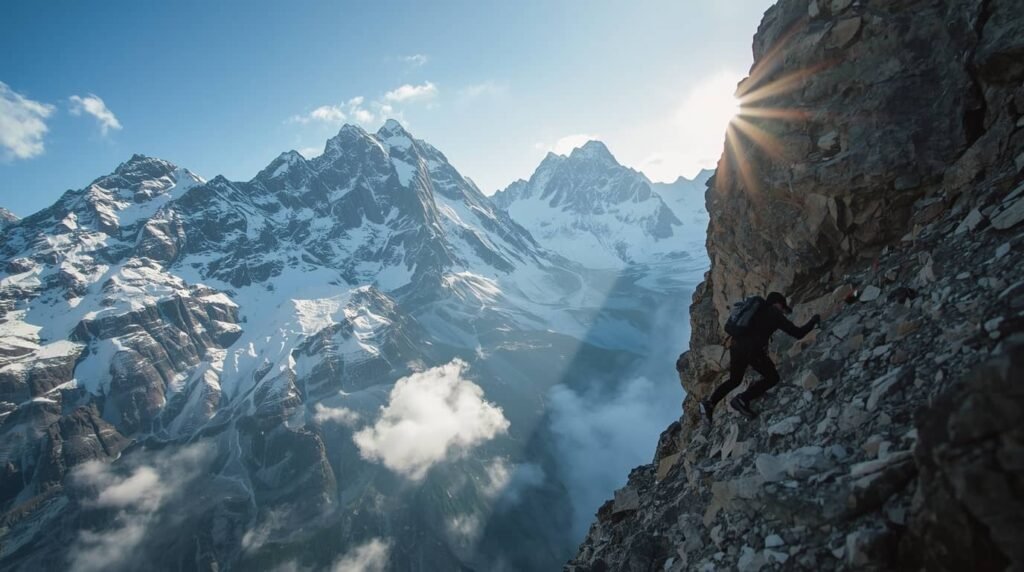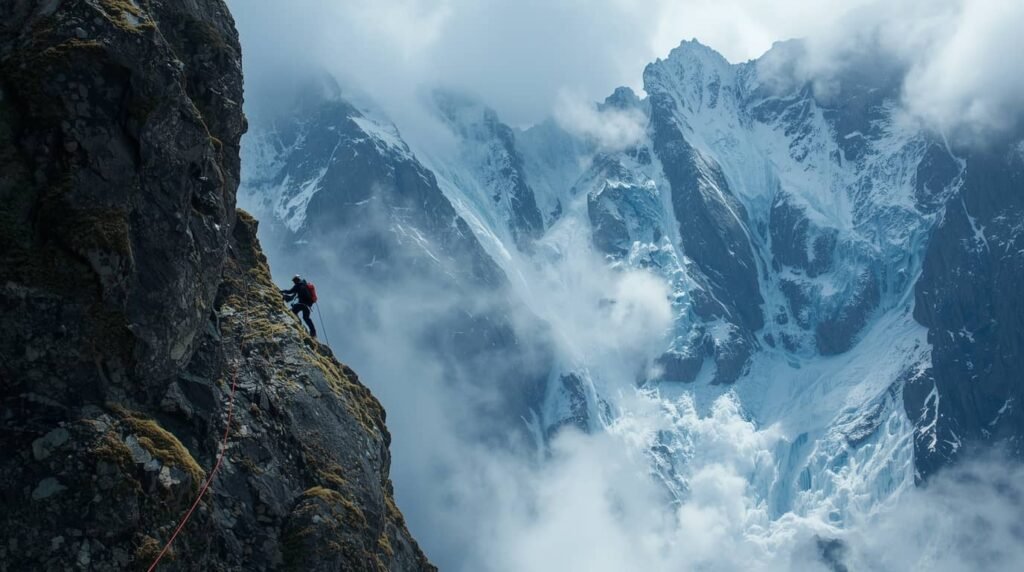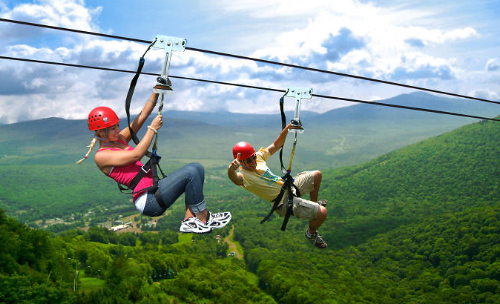
For those who live life on the edge, extreme sports offer the ultimate blend of thrill, challenge, and adventure. Whether you’re scaling a mountain, the drive to push physical limits is evident. It shows when catching a massive wave or running an ultramarathon.
The drive to push mental limits is another common thread among adrenaline enthusiasts. But extreme sports aren’t just about the action. They’re also about the stories and the lessons learned. The human experiences behind these incredible feats are important as well. That’s where books come in. In this Extreme Sports Reading List, we explore gripping tales of survival, resilience, and the quest for the extraordinary. These stories are perfect for adventurers and armchair athletes alike.
An Extreme Sports Reading List
For adrenaline junkies and thrill-seekers, extreme sports offer more than just a rush—they’re a way of life. You could be a veteran climber or an aspiring skydiver. Diving into the world of extreme sports through books is a great way to learn. It’s also a great way to get inspired and feel the thrill from the comfort of your own home.
Here’s an extreme sports reading list that covers everything from rock climbing and surfing to ultra-running and base jumping. These books capture the spirit of adventure, resilience, and the sheer love for pushing human limits.
1. “Into Thin Air” by Jon Krakauer
Into Thin Air is one of the most iconic books about mountaineering. It is a firsthand account of the 1996 Mount Everest disaster. Krakauer, a journalist and climber, brings readers right into the heart of the chaos. He explores the physical and psychological toll of extreme altitude and life-or-death decisions.
2. Born to Run” by Christopher McDougall
If you’ve ever been curious about ultra-running, Born to Run is a must-read. McDougall uncovers the secrets of the Tarahumara group in Mexico, known for their superhuman ability to run ultra-long distances. It’s a deep dive into endurance, human potential, and the joy of running.
3. The Wave” by Susan Casey
Big wave surfing is one of the most dangerous sports on the planet. The Wave takes you into the lives of the surfers who chase these monsters. Susan Casey explores the science behind these massive waves. She profiles the fearless riders who risk it all to surf them.
4. No Shortcuts to the Top” by Ed Viesturs
Ed Viesturs is one of America’s premier high-altitude climbers. He recounts his journey to summit the world’s 14 highest peaks without supplemental oxygen. No Shortcuts to the Top is a story of perseverance and patience. It explores the calculated risks that come with climbing the highest and most dangerous mountains on Earth.
5. Endurance: Shackleton’s Incredible Voyage
Though it is not about extreme sports in the modern sense, Endurance tells an incredible true story. Sir Ernest Shackleton’s Antarctic expedition faced dire circumstances. His ship was trapped in ice. His crew fought for survival. This book is a testament to human endurance and leadership in the face of unimaginable odds.
6. The Art of Flight” by Travis Rice
This is more of a documentary than a book. The companion pieces and stories behind it are essential for anyone into snowboarding or action sports. The Art of Flight follows snowboarding legend Travis Rice as he takes on some of the world’s most challenging terrains. The associated books and interviews provide deep insights into his process and mindset.
7. Fearless: The Adam Brown Story
A different kind of extreme sports story, Fearless follows the life of Navy SEAL Adam Brown. He lived his life on the edge in both his personal and professional endeavors. It’s a gripping tale of redemption, courage, and pushing boundaries.
Advice for Readers with us
At howtokh.com, we’re all about helping you navigate life’s adventures. You might be reading about extreme sports for inspiration. Or, you could be gearing up for your next adrenaline-filled pursuit. Our website offers tips, guides, and recommendations to support your journey. From staying healthy to finding the best gear for your next challenge, howtokh.com is your go-to resource for living boldly and staying informed.
Check out our Health page for tips on how to stay in peak condition. Stay tuned for more exciting content on all things extreme sports!

Why do we start with Extreme Sports?
While extreme sports are dangerous, people are drawn to them for complex reasons that go far beyond a simple “thrill.” Here is a breakdown. It explores common themes in extreme sports culture. It explains why some people pursue them despite the risks.
1. The Pursuit of Mastery and Flow State
This is perhaps the most significant psychological driver. Extreme sports require immense focus, skill, and presence.
- Complete Immersion: A climber on a rock face stays totally focused on the climb. A wingsuit flyer navigating a ridge cannot think about work. Bills or daily stress cannot occupy the mind. The mind is completely focused on the present moment. This state of intense, effortless concentration is known as “flow.”
- Peak Performance: Achieving a flow state is intensely rewarding. It represents a peak of human performance where skill and challenge are perfectly matched. Participants often describe it as a feeling of euphoria and total control. This is the opposite of how it appears from the outside (chaotic and out-of-control).
2. Personal Growth and Confronting Fear
For many, extreme sports are a tool for profound self-discovery.
- Building Resilience: Facing a real, tangible fear (like falling) successfully builds incredible self-confidence. Managing that fear through training and mental fortitude is key. It teaches that they are capable of far more than they thought.
- Clarity and Perspective: Confronting mortality in a controlled way can make everyday problems seem trivial. It often leads to a greater appreciation for life and a clearer perspective on what truly matters. Surviving a calculated risk can make someone feel more alive than ever before.
3. The Authenticity and Pure Experience
In a modern world that can feel digital, mediated, and safe, extreme sports offer something raw and real.
- Genuine Consequences: Unlike a video game, the consequences are real. This authenticity is compelling. The emotions—fear, joy, relief—are not simulated; they are earned and deeply felt.
- Connection to Nature: Sports like big-wave surfing, mountaineering, or backcountry skiing involve engaging with nature’s raw power. Participants experience nature on its own terms. It’s a humbling and powerful experience that fosters a deep respect for the natural world.
4. The Community and Shared Identity
The extreme sports community is incredibly tight-knit.
- Shared Values: Participants bond over a shared understanding of the risks, the dedication required, and the unique experiences they undergo. This creates a powerful sense of belonging and camaraderie.
- Trust and Communication: In activities like rock climbing or BASE jumping, your life often literally depends on your partner. This builds bonds of trust that are deeper than those in most other areas of life.
5. It’s Not About “Death” for Calculated Risk
This is a crucial misunderstanding. For most serious participants, it is not about being reckless.
- Risk Management: Experts spend years training, studying weather patterns, checking and double-checking equipment, and meticulously planning. They are not ignoring the danger. They use skill and knowledge to manage it to an acceptable level for them.
- The “Buzz” of Competence: The euphoria does not come from nearly dying. It arises from successfully executing a plan in a high-stakes environment. The “thrill” is the satisfaction of a complex task done well under pressure.
6. A Counterbalance to Modern Life
Some psychologists argue that these sports fulfill primal needs that are absent in modern society.
- The Need for Challenge: Humans have an innate drive to test themselves, to explore, and to conquer challenges. For some, a corporate job or a safe daily routine doesn’t satisfy this deep-seated need. Extreme sports provide a clear, meaningful challenge.

Conclusion: Redefining “Dangerous”
From the outside, the activities listed on howtokh.com (like wingsuit flying or big-wave surfing) look purely dangerous. But from the inside, participants see them differently:
They see them as disciplines that require immense physical and mental training.
They see them as art forms that involve grace, style, and mastery.
They see them as vehicles for self-improvement, community, and the most intense experiences life has to offer.
The danger is not the point; it is the catalyst. It demands total focus. It creates the opportunity for flow. It makes the subsequent success so profoundly meaningful. For those who pursue them, the greater risk might be a life without that sense of being truly, completely alive.

Leave a Reply
You must be logged in to post a comment.